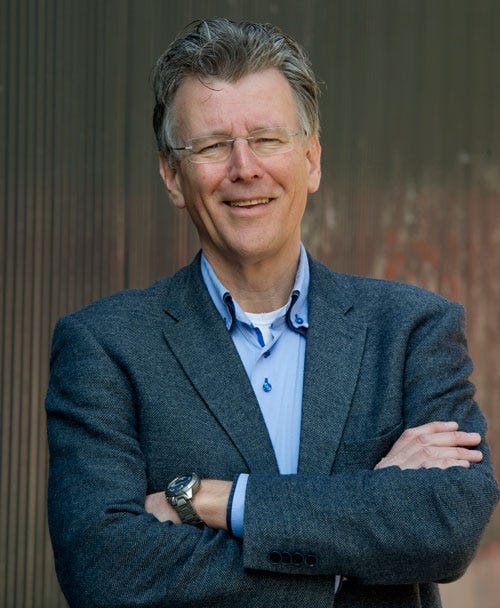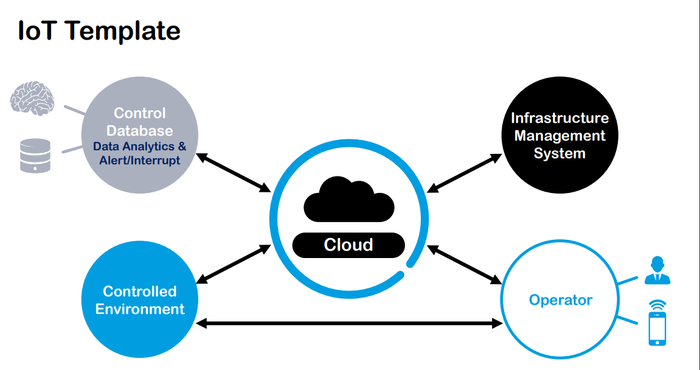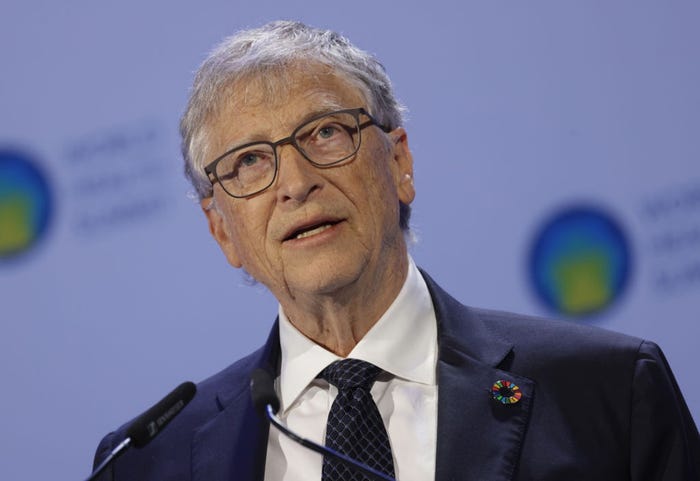Q&A: A wireless pioneer reflects on the future of IoTQ&A: A wireless pioneer reflects on the future of IoT
Having helped lay the groundwork for Wi-Fi in the 1990s, a Dutch innovator sheds light on modern connected devices, artificial intelligence and the future of IoT.
November 20, 2017

The entrepreneur Cees Links has a unique perspective on the future of IoT. Having played a pivotal role in establishing Wi-Fi technology in the 1990s, Links notes in a recent interview with the IoT Institute how a mixture of standardization and falling costs can propel a new technology forward. “We went to Apple with proprietary wireless technology in 1991 or 1992,” he recalls. “The answer was: ‘Come back when it is a worldwide standard and technology.’”
Links, who in that timeframe worked on wireless local area networks companies like NCR, AT&T and Lucent Technologies, went on to help start the IEEE 802.11 working group for wireless networking. He also began hiring lobbyists to obtain a worldwide frequency band in 2.4 GHz. “Over the years, we worked on bringing the costs [of wireless networking] down and the speed up. In 1998, I got a call from from one of the lieutenants of Steve Jobs asking about wireless technology,” says Links, who is now the general manager of the low-power wireless business unit at Qorvo, a semiconductor firm. “I pulled my slides together, got on a plane and went to Cupertino and presented it to Steve Jobs the following Monday on what was Wi-Fi at that time.” Apple went on to launch AirPort wireless device. “That was the launch of Wi-Fi.”
After Wi-Fi’s debut, a number of tech vendors also wanted to adopt the technology, paving the way for it to become ubiquitous in cafés, homes, workplaces as well as for an array of IoT technologies. “If I ask my son: ‘Did you know there was life before Wi-Fi?’” Links reflects today. “He cannot imagine.”
In the following interview, Links shares his thoughts on the current state of technology, how technology will transform the job market, the future of IoT, and how big and small IoT companies approach innovation.
 How would you describe the broader IoT landscape today?
How would you describe the broader IoT landscape today?
Links: I still would say that many of the projects that I see are pretty immature. On the extreme end, I hear IT managers still saying: “We have money earmarked for IoT or AI. What can we do with it?” rather than saying: “This is the problem we want to solve with better sensor controls.”
Let me share with you my IoT template. And you see in the bottom left-hand corner [of the image below] the controlled environment. Let’s call it a FitBit. It goes via the cloud or via your phone to a control database that does data analytics — the AI. It alerts and interrupts and communicates with the operator of, say, a wearable device — using an app on your phone, and the whole thing is managed and controlled by an infrastructure management system. For the controlled environment, you can use a FitBit, a smart home, a connected oil rig or a big factory or anything you can think of. These are the four key elements.
What you see is a lot of is people saying we can put sensors into a controlled environment and then asking what they can do with it. Or how they are interested in AI but they are still asking what they can we do with it.
I start with this picture [below] to explain what the components are. None of them make sense on their own and none of these make sense if you don’t know what situation you are addressing.

So sometimes you have the blind leading the blind with AI or IoT projects?
Links: People need AI- or IoT-savvy people in their factories, buildings or environment before they can even define the requirements that AI and IoT can solve.
That is what is creating this frenzy in demand for skills in IoT and AI right now.
And at the same time you have AI/IoT threatening the long-term career prospects of workers such as truck drivers?
Links: You can add airline pilots and train drivers to the list.
But I am inclined to reverse the picture as well and look at the benefits [of turning over the reins to AI]. For instance, consider that something like 60% of the airplane incidents are caused by pilot error.
I think that one of the best selling features for self-driving cars or trucks is that it will improve the quality of our traffic system.
[IoT Data & AI Summit demonstrates how the next generation of IoT and AI technologies will converge to unlock the intelligence of things. Get your ticket now.]
I don’t think AI and IoT will be a threat to employment as such, but they will create a lot of churn, and the churn will be painful and create a lot of upheaval as we have seen in earlier industrial revolutions.
In the industrial revolution, when the textile industry became highly automated, hundreds of thousands of employees were laid off in a single stroke of the pen
That is the kind of things as a society that we have to deal with. In all fairness, a lot of the technology-savvy people don’t understand the reach and the width of this new technology, let alone the lawmakers charged with ensuring security and privacy. How can you ask a lawmaker to pass a law about self-driving cars if you have no idea how this is going to pan out?
On top of that, I am very concerned about social upheaval.
There will be tremendous stress in certain jobs because there are few people to fill the roles that are need, and it will be tremendous stress on people with experience in jobs that don’t exist anymore.
My feeling is that we are headed for some rough times as we always do as new technologies are breaking in.
I am afraid this more of a governmental issue than a company issue. I am struggling to see how some of these paradigm shifts can be dealt with from inside a company
I am worried people will lose jobs as well as companies will go belly up because of their declining relevance.
But look at the flipside. 200 years ago, 90% of the people did not have enough food. They were not sure about the food they were eating the next day. Today, that number has reduced to 10%.
It is still a staggering number. In the same 200 years, the population has increased by approximately tenfold.
That would not have been possible without technology, and it all started with the industrial revolution.
At the same time, as technology develops, there is a lot of rubber that hits the road. If you get squeezed under it, it is very painful.
What do you see as a central theme here?
Links: My message is: the problem probably cannot be solved by retraining truckers into AI specialists.
It needs to be solved with where we are headed with our education systems. We need to confront the problem head-on rather than worry about it. If a tiger senses you are afraid, it will jump you. We need to look the tiger in the eyes and master the tiger — by doing the right thing.
This is a generational problem. Children need to be retrained in jobs that are relevant for the future
Governments also have responsibility to help retain and create flexible workers.
Having worked for big companies as well as startups, what is your take on how the two companies drive innovation in the IoT landscape?
Links: I think that big companies have a tough time with innovation because they apply old rules to new worlds that they want to try to invent. They miss the flexibility.
For every startup that is successful, there are nine that go under.
A big company might decide to create a startup in house. Maybe that have an incubation project with ten projects. Only one will likely become successful. That is the hit rate. And of the one that becomes successful, that one will be killed by corporate procedures because the pace of the company will be pushed onto that startup.
But I would say that big companies have a tough time driving innovation. I can give you the example of Philips. The traditional Philips company today virtually does not exist anymore. It has been fragmented into about 100 companies. Some of them have been extremely successful like ASML, which builds machines for chip factories. They are almost a monopoly.
I can mention about ten other successful companies that are splinters from the breakup of Philips.
Philips breaking up into pieces was a blessing for the region. They are headquartered in Eindhoven, which is about an hour south of Amsterdam. Today, the area has the highest patent density in the world.
When we look at the startup space, we get totally mesmerized by the one unicorn that really succeeds but the chances of one of your startups from your inhouse incubator will be that unicorn — the chances are way higher that you will kill it by your own procedures and myopic view.
I don’t want to pass any judgement but it is almost a law of nature. It is hard for someone at a big company to have aspirations to be a startup when they have never worked at a startup.
One of the reasons why a startup founder succeeds is that he has borrowed money from his friends and family and has no choice but to succeed. But still nine out of ten go under and are ostracized by their family. The one in ten that services gets the press but in reality, he is just darned lucky.
About the Author
You May Also Like

.jpg?width=700&auto=webp&quality=80&disable=upscale)
.jpg?width=700&auto=webp&quality=80&disable=upscale)
.jpg?width=300&auto=webp&quality=80&disable=upscale)


